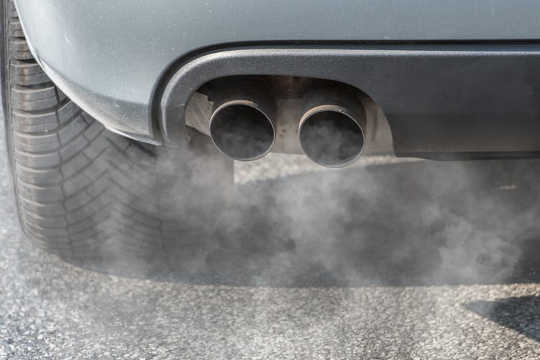
Kittipong33 / shutterstock
Exposure to air pollution has a staggering effect on human health. It is thought to cause around 7m premature deaths each year worldwide, with around 40,000 occurring in Britain.
These premature deaths can occur through air pollution increasing the likelihood of heart disease and stroke, or through exacerbating existing lung diseases such as chronic obstructive pulmonary disease (COPD) or asthma. My colleagues and I recently showed that air pollution particles can even damage the immune system.
Governments can of course take action, regulating sources of pollution such as car exhausts, factories or wood fires, or implementing less obvious measures such as strategic tree planting. Indeed a new EU report says member states need to take more effective action to improve air quality and make the public aware of the problem.
However, there may be another issue in terms of how we actually measure air pollution, and what it means for human health.
Measuring pollution another way
Air pollution is frequently underestimated, either through monitoring in the wrong places, or through limitations of the detection methods. However, research presented by Jacqueline Hamilton at the British Science Festival suggests that we need to look in much greater detail at the causes of air pollution in the environment.
Hamilton, an atmospheric chemist based at the University of York, is an expert in detecting the compounds that can contribute to the formation of some of the most damaging particles in air pollution. She says that rather than looking at particulate air pollution in isolation, we need to look at some of the substances that can generate air pollution particles, which she calls “missing emissions”.

Diesel is a major source of large hydrocarbons. andrekoehn/Shutterstock
One key pollutant, which Hamilton terms “large hydrocarbons”, may be causing more of a problem than has been realised. These substances contain high numbers of carbon atoms, and are found in higher concentrations in diesel than in petrol.
Large hydrocarbons can be released into the air by vehicles which use diesel as a fuel. While new cars have low hydrocarbon emissions levels, older cars, as well as buses and taxis, can release high concentrations of diesel hydrocarbons from their exhausts.
The key issue is that while they are not particularly toxic in themselves, large hydrocarbons can actually react with other substances in the air to generate damaging nano-sized particles, what we normally think of as “particulate air pollution”. These particles have been shown to be extremely toxic to human health.
While there have been successful efforts to reduce the hydrocarbons that are emitted into the environment, we have previously known very little about how large hydrocarbons are released as they are so difficult to detect.
Hamilton, however, has been able to use new high resolution “chromatography” technology that hasn’t been used before to detect emissions from diesel engines. She used this technique to measure a busy traffic area in London and identify the composition of all the hydrocarbons released. She found extremely high concentrations of large hydrocarbons. In fact, her data suggests that using current models, some hydrocarbon components of diesel emissions, such as those with 12 and 13 carbon atoms, may be underestimated by a factor of at least 70.
This is a concern, as there is very little monitoring of large hydrocarbons in terms of air quality. There is a well established network of over 300 air sampling units distributed throughout the UK which continually measure the nitrogen dioxide and particle concentrations in the air we breathe. However, there are only four monitoring sites that can measure hydrocarbons.
I spoke with Hamilton and she said that it was critical for more research to be performed to understand the chemistry of large hydrocarbons. This is essential if they are to be incorporated into the air quality models used by the government to understand air pollution exposure. She noted that it was still unclear how driving conditions could contribute to large hydrocarbon release from diesel vehicles, and that more work in the lab, and in the field, is urgently needed.
The UK government has recently closed its consultation on its 2018 clean air strategy and the outcomes are due to be published in March 2019. Until then, it is clear that we need to continue to take action on both the known, and the “missing emissions” if we are to reduce the number of deaths attributed to air pollution.![]()
About The Author
Peter Barlow, Associate Professor of Immunology and Infection and Director of Research of the School of Applied Sciences, Edinburgh Napier University
This article is republished from The Conversation under a Creative Commons license. Read the original article.
Related Books
at InnerSelf Market and Amazon
























